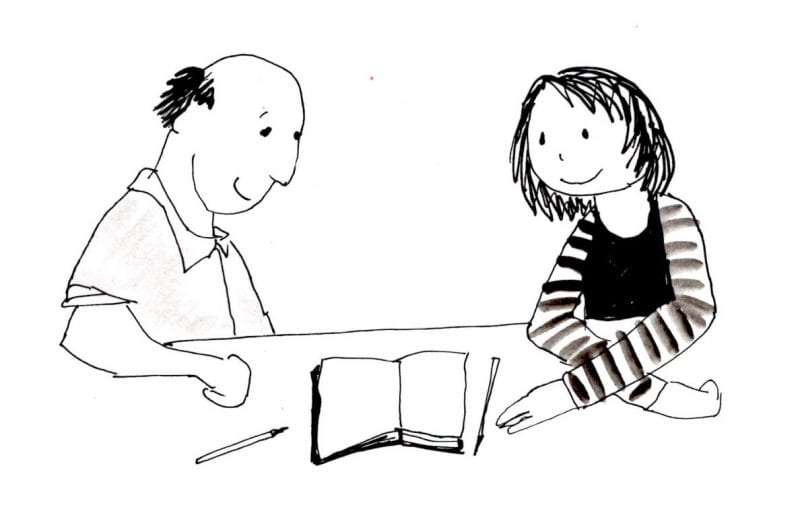
Introduction to DDP PACE for Education Professionals Touchbase
DDP-PACE: Introduction to the PACE Attitude in Action Developed specifically for Australia, this training is for those who work with, teach, provide care or parent children and young people who have experienced the damaging effects of abuse, neglect and disruption. The underpinning model is Dyadic Developmental Practice (DDP).

Watch 'Reaching Into the Hurt Child's Mind and Heart with PACE' video
Dyadic developmental psychotherapy (DDP) is an attachment-focused therapy developed by Drs. Daniel Hughes and Arthur Becker-Weidman. It is an evidence-based treatment for complex trauma, reactive.

steadypace® factor
Dan Hughes, a Clinical Psychologist, created Dyadic Developmental Psychotherapy (DDP) as a treatment for families with adopted or fostered children who had experienced neglect and abuse in their birth families and suffered from significant developmental trauma.. DDP is based on and brings together attachment theory, what we understand about developmental trauma, the neurobiology of trauma.

PACE Consultancy Services Dhaka
PACE Foundations Open Course 1/5 Promoting Positive Behaviour & De-escalation (with Playfulness from PACE) 2/5 Trauma-Informed Care (with Acceptance from PACE) 3/5 Conversations for Change (with Curiosity from PACE) 4/5 Compassion Fatigue, Co-Regulation & Attachment (with Empathy from PACE) 5/5 Additional Courses Allegations

PACE Archives DDP Network Learn english words, Pace, English words
About DDP Dan Hughes, Founder Dyadic Developmental Psychotherapy Dyadic Developmental Parenting Dyadic Developmental Practice What is meant by PACE? Parents & Carers Find a Practitioner in DDP near you Is DDP right for your family? Groups for Parents Family Stories For Young People Research Evidence Base for DDP Selected Evidence Base examples

Dan Hughes & Jon Baylin "How DDP & PACE reawaken the capacity to feel
PACE is training to support adults to build safe, trusting and meaningful relationships with children and young people who have experienced trauma. PACE (Playfulness, Acceptance, Curiosity and Empathy) is the core therapeutic, relational attitude of DDP (Dyadic Developmental Practice).

DDP Inc. Montreal QC
DDP is a therapy, parenting approach and model for practice that uses what we know about attachment and developmental trauma to help children and families with their relationships. Developing trust with the help of PACE, DDP provides interventions for families and those who support them. Find your nearest Practitioner in DDP, find out about the.

PACE for Parents and Carers to the world of the Moffles!
Dyadic Developmental Psychotherapy and Practice (DDP) is an intervention model that can meet the therapeutic needs of the children alongside the support needs of parents and practitioners caring for them. The attitude of PACE (playfulness, acceptance, curiosity and empathy) is central within DDP interventions, used by therapists, parents and.

DDP Dyadic Developmental Psychotherapy The Koru Project
The DDP Resource Library contains books, articles, multimedia and relevant websites for therapists, practitioners, parents and schools. Books and publications can be bought from all good bookstores and online retailers. For more information about any entry in the Resource Library, please click on the entry's title. If you need any help understanding the formats of files…

Pin on DDP
A recent overview of this work can be found in Chapter 11 DDP Research, Evidence Base, and Outcomes in Healing Relational Trauma with Attachment-Focused Interventions, Hughes, Golding & Hudson, 2019.These have helped to develop the DDP model and clarify research questions to take forward. Featured Developments and Future areas of research can be found below.

Nissan Acceptance Wholesale Clearance, Save 45 jlcatj.gob.mx
The central tenet of DDP is PACE. PACE stands for Playfulness, Acceptance, Curiosity and Empathy. This combination of responses in the face of dysregulated behaviour, conflict, fear and anger is almost magical. PACE can be used in therapy, parenting, schools or any relationship to convey unconditional positive regard and prioritising the.

New DDP Therapy Commissioning Guidelines DDP Network
What is DDP PACE Training? DDP PACE training will help you to understand the impact of developmental trauma and the challenges that children with this experience can struggle with. It introduces how the experience of PACE within a DDP-informed approach can start to help these children to recover trust and safety, giving them back their futures.

teamLab Pace Gallery
PACE is a way of thinking, feeling, communicating and behaving that aims to make the child feel safe. It is done by communicating the four elements of PACE together flexibly, not as a step by step process. Using PACE helps adults to slow down their reactions, stay calm and tune into what the child is experiencing in the moment.

New Moffle PACE infographic resources DDP Network
The underpinning model is Dyadic Developmental Practice (DDP), an approach which allows carers to get beyond the defences and blocked trust of children in their care by developing an attitude of Playfulness, Acceptance, Curiosity and Empathy (PACE).

Empathy puts the E in PACE! to the world of the Moffles!
What is meant by PACE? Playfulness, acceptance, curiosity and empathy.. PACE is a way of thinking, feeling, communicating and behaving that aims to make the child feel safe. It is based upon how parents connect with their very young infants. As with young toddlers, with safety the child can begin to explore. With PACE, the troubled child can start to look at himself and let others start to see.

Therapeutic Parenting with PACE DDP Network
Dyadic Developmental Psychotherapy (DDP) is a treatment approach for families of traumatized children or those with disorders of attachment. It was originally developed by Daniel Hughes, an expert in attachment and trauma. DDP principally involves creating a PLACE (playful, loving, accepting, curious, and empathic) environment in which the.